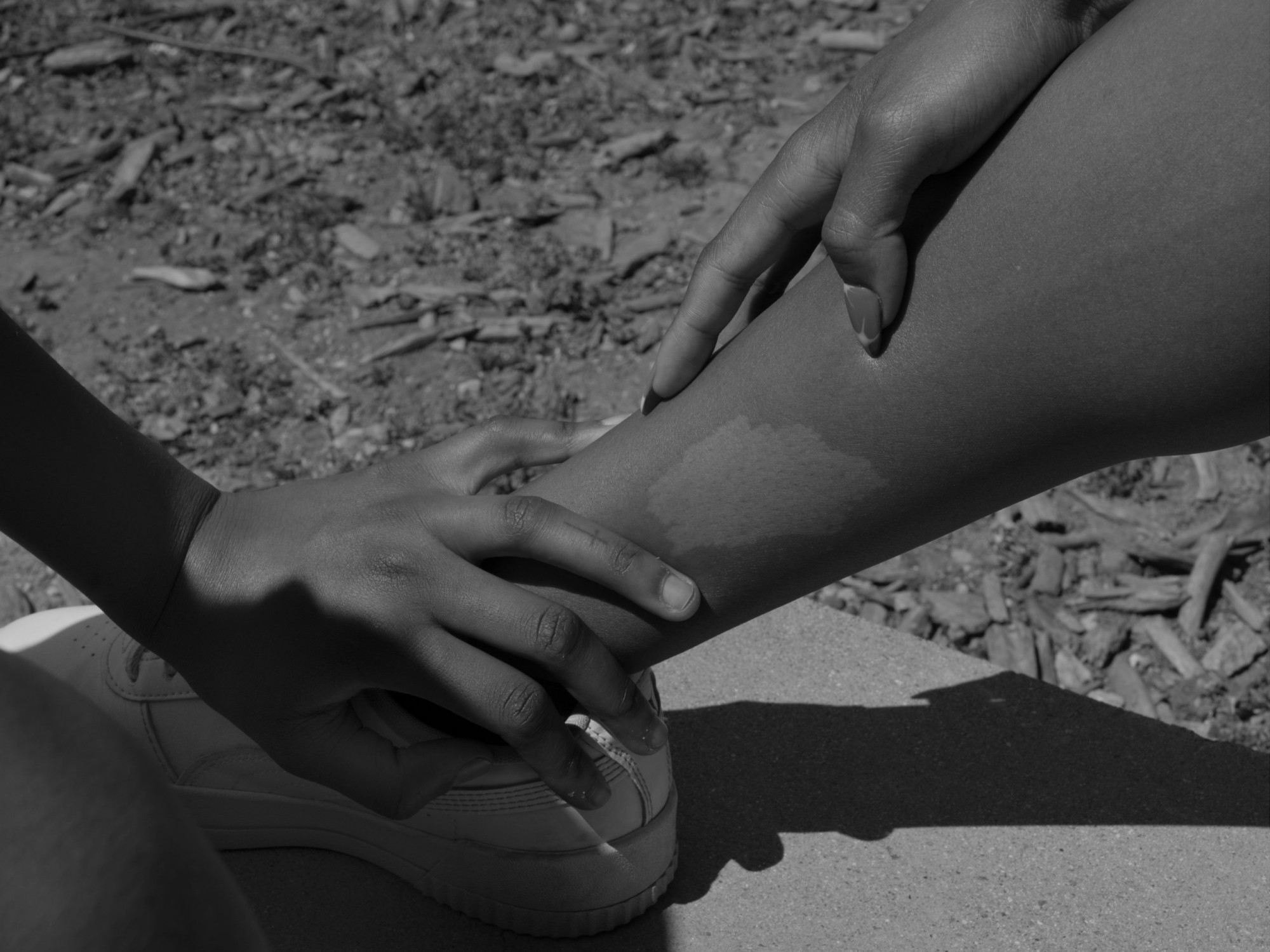1150 25th St /
/ (slash)
Joint Custody features works by artists Natalia Lassalle-Morillo and Lacey Lennon that center frameworks of performance as tools to (re)examine personal histories. Scripts are saved things: memories revisited as dialogue, setting, and action. The dynamic between actor, director, and camera is a mechanism for negotiating the entangled relationships of daughters and mothers, the tension between our interior emotions and the selves we perform in public. Each take is a conversation that allows the scene to unfold differently. A reciprocal opportunity to rewrite a narrative that once felt fixed or to reveal latent ones.
Natalia Lassalle-Morillo’s three-channel video installation Retiro (2019) is a collaborative project produced with her mother, Gloria, born from a mutual desire to understand the other better. Motivated in part by their shared grief over the death of Gloria’s mother (Natalia’s grandmother), the filmwithin-a-film nests a reconstruction of a transcendental moment from Gloria’s life—for which Natalia inverts the traditional director/subject relationship by handing over total dramaturgical authorship to Gloria, who casts the artist to perform as Gloria’s younger self—within a broader documentary narrative composed from behind-the-scenes footage and interviews directed by Natalia. Over the course of five years, mother and daughter meet each other again and again to craft an intimate film that explores memory, matrilineal inheritance, aging, and the coexistence of many possible realities.
Lacey Lennon’s series of photographs are sometimes documentary in approach, but mostly are based on short plotless plays and premises she writes about moments of everyday reckoning with grief, love, and family. She invites performers—actors, athletes, dancers, and friends—to interpret the prompt. Rehearsals might take weeks, the shoot a couple of days, during which Lennon allows her subjects to improvise as they bring their full messy selves to bear on their embodiment of the stories. The photographs remain as traces of the original encounter; a stilled visual rhyme of the performance that renders the complexity of emotional, physical, and psychic communication through gesture, expression, and tone.
Lassalle-Morillo’s and Lennon’s practices probe the ability of film and photography to capture multiple simultaneous perspectives of a single moment by blurring the boundaries of documentary, documentation, and performance. Their works operate at the seams of fiction and reality, where stories slip between the gaps in images and invite us to discover a world beyond the frame through the experiences of others.
—Amanda Nudelman
/ (Slash)
